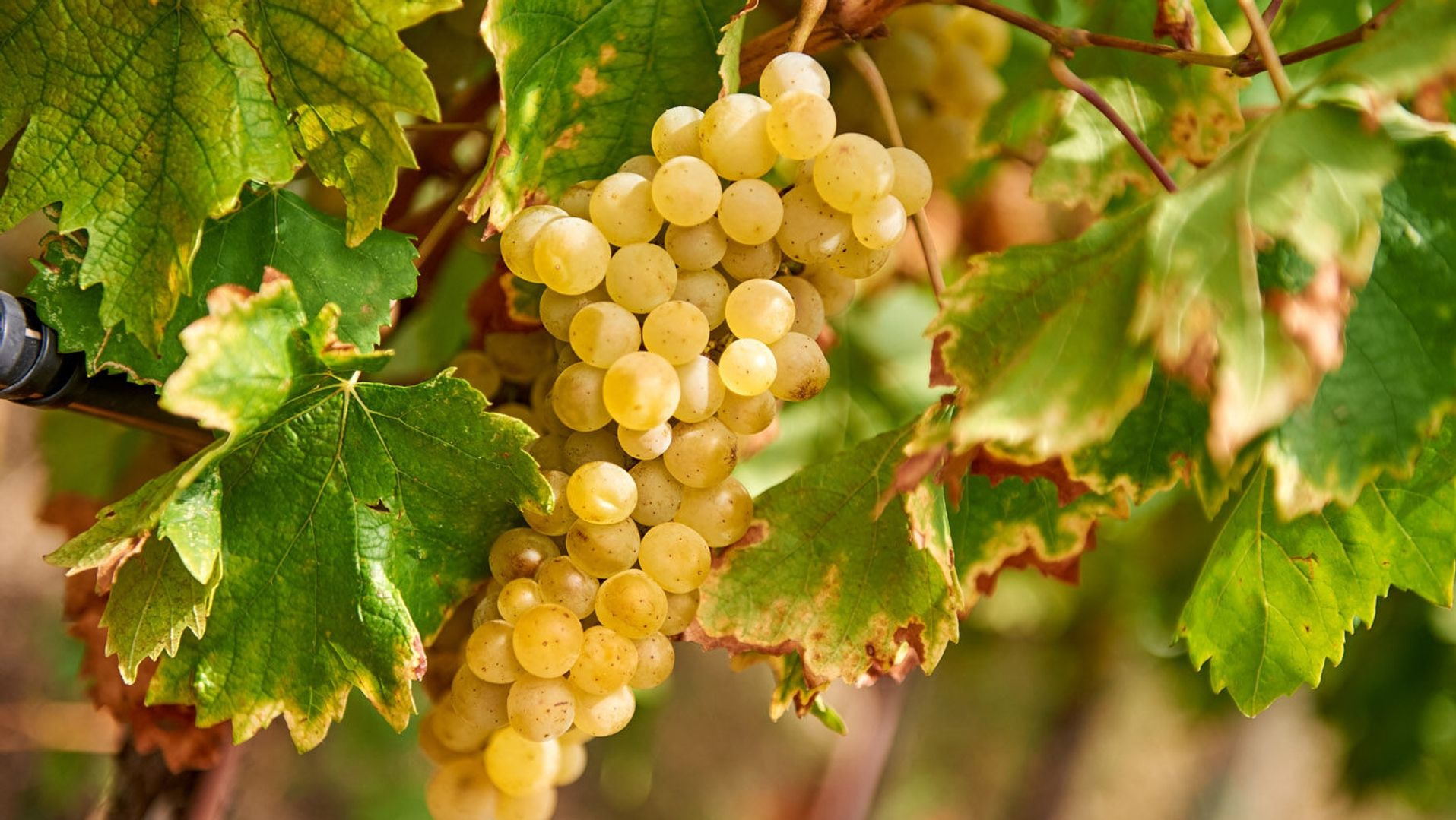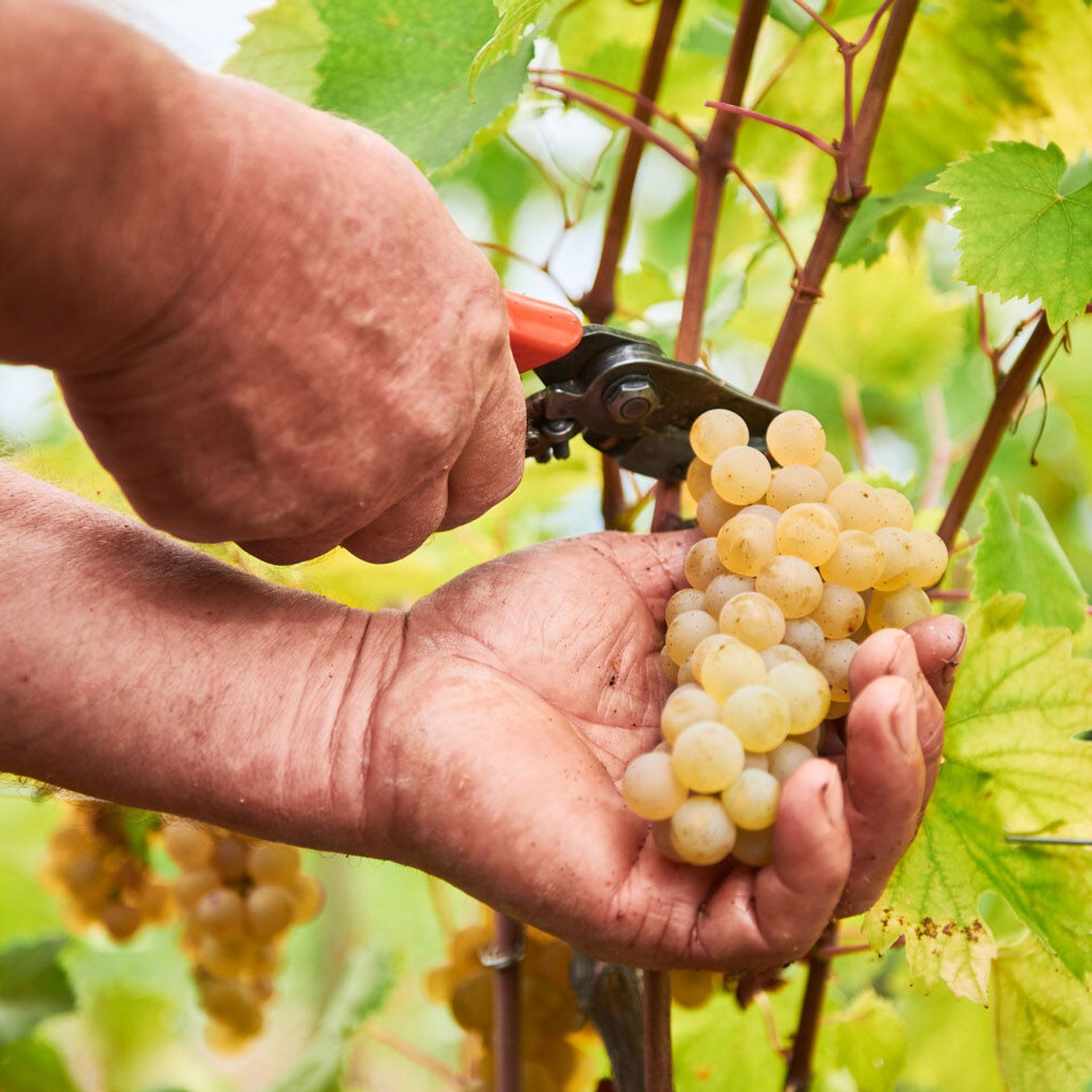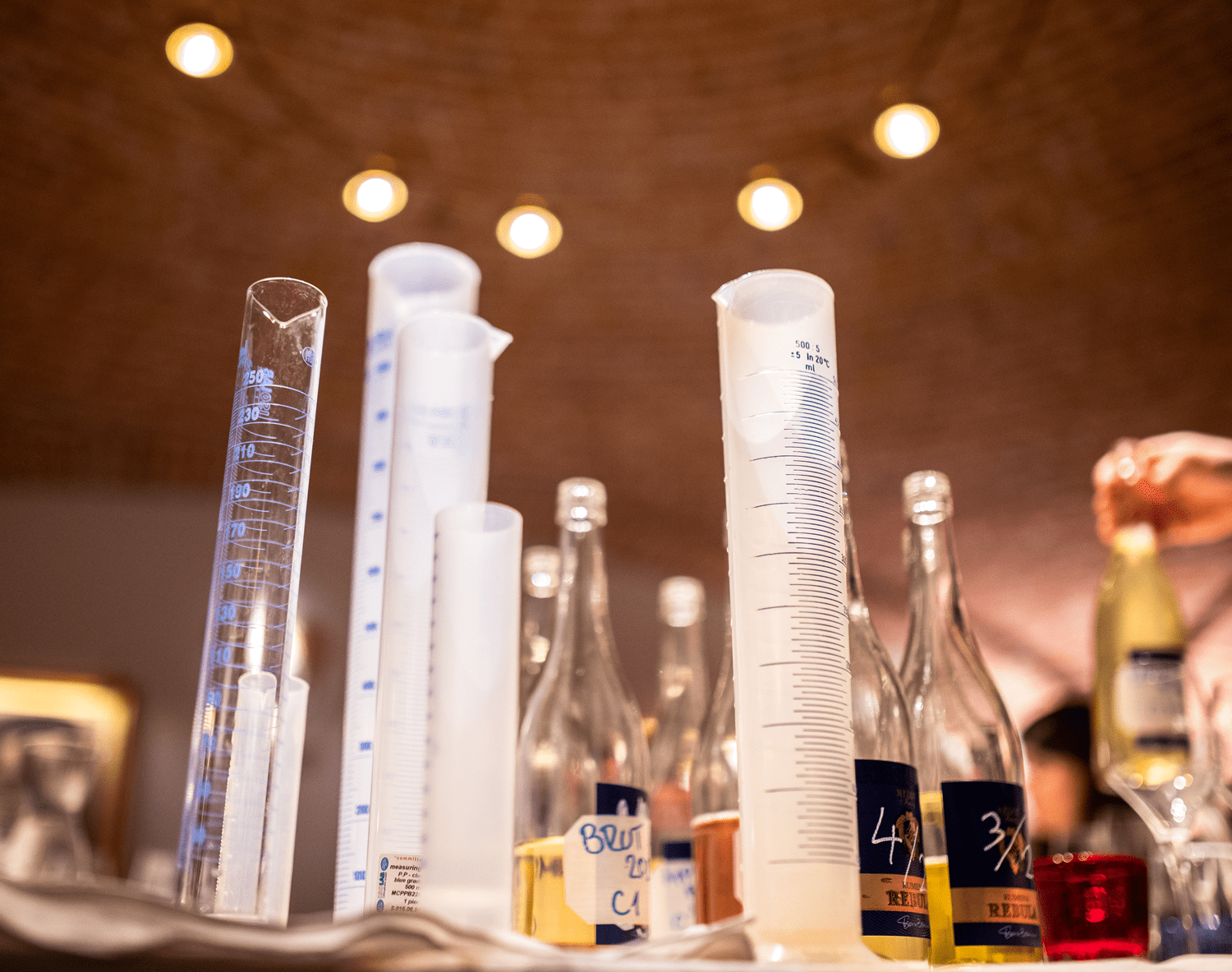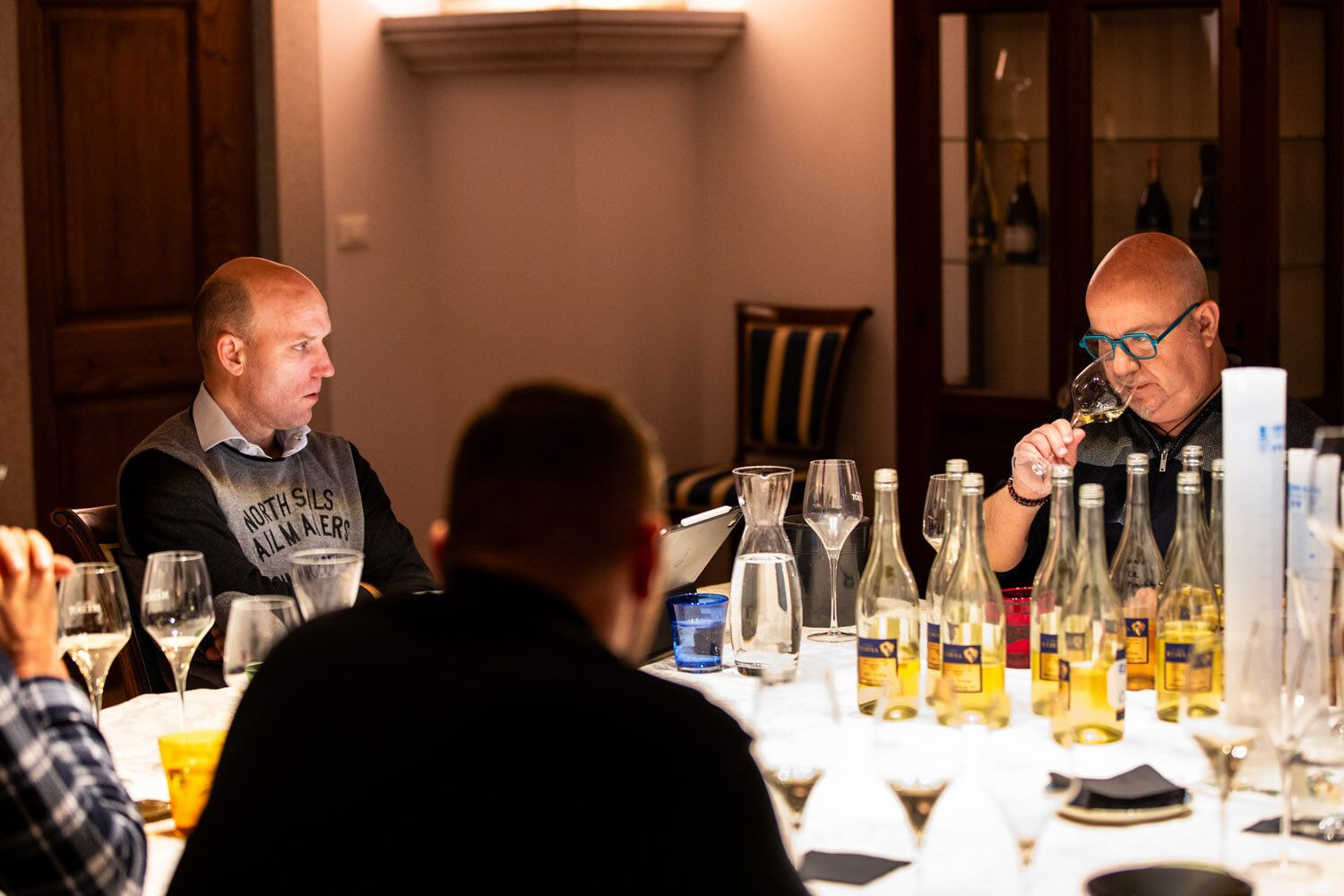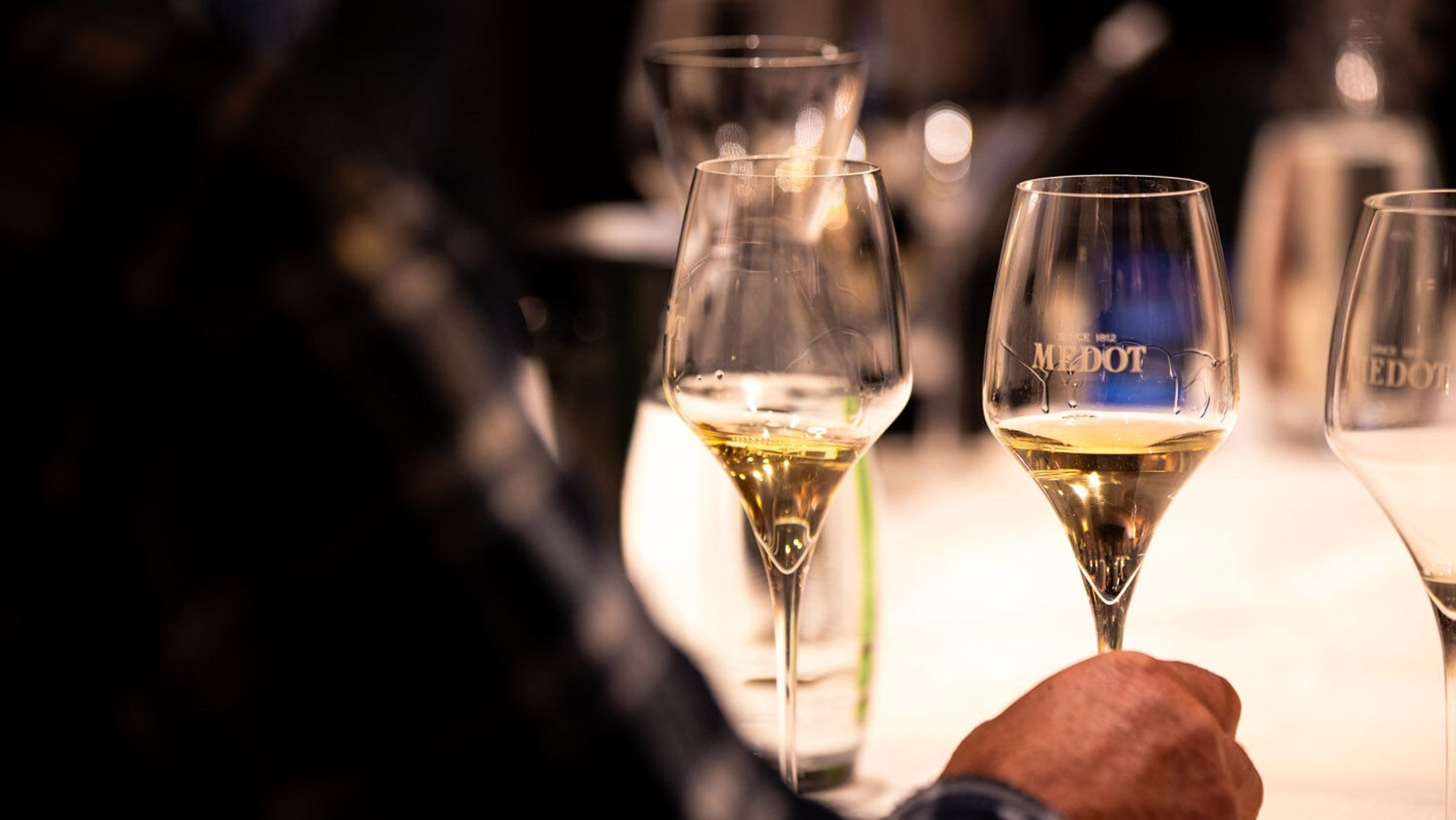Medot's oenologist Luka Ribolica emphasizes that the blending process is marked by three important steps:
1. The right moment for harvesting our grapes
»Because we are in Brda, we want to add the special touch of our region, which we get with Rebula, with it we make the sparkling wine special. Rebula is a very demanding variety. A lot of knowledge is needed to decide on the harvest at the right moment, preserving the acidity necessary, achieving the desired level of sugar, while capturing the right ripeness that will contribute the desired fruity note. Choosing the right moment for harvesting is very important, if we miss it, Rebula can very quickly become bitter, which is a consequence of common phenols, polyphenols. Only at the right ripeness can we produce the base wine that gives us the desired characteristics, finesse, minerality, and expresses the character of the region - all that makes the wine special. For sparkling wines, grapes are harvested at technological maturity, meaning higher acidity and lower sugars and lower pH. Harvest time varies for each variety, usually starting in mid-August with Chardonnay, followed by Pinot Noir, then Rebula at the end of August, beginning of September. After harvest, fermentation follows, which lasts two to three weeks, resulting in base wine, which then rests on fine lees until January. That's when we come to the moment of decision-making through tasting for blending."



